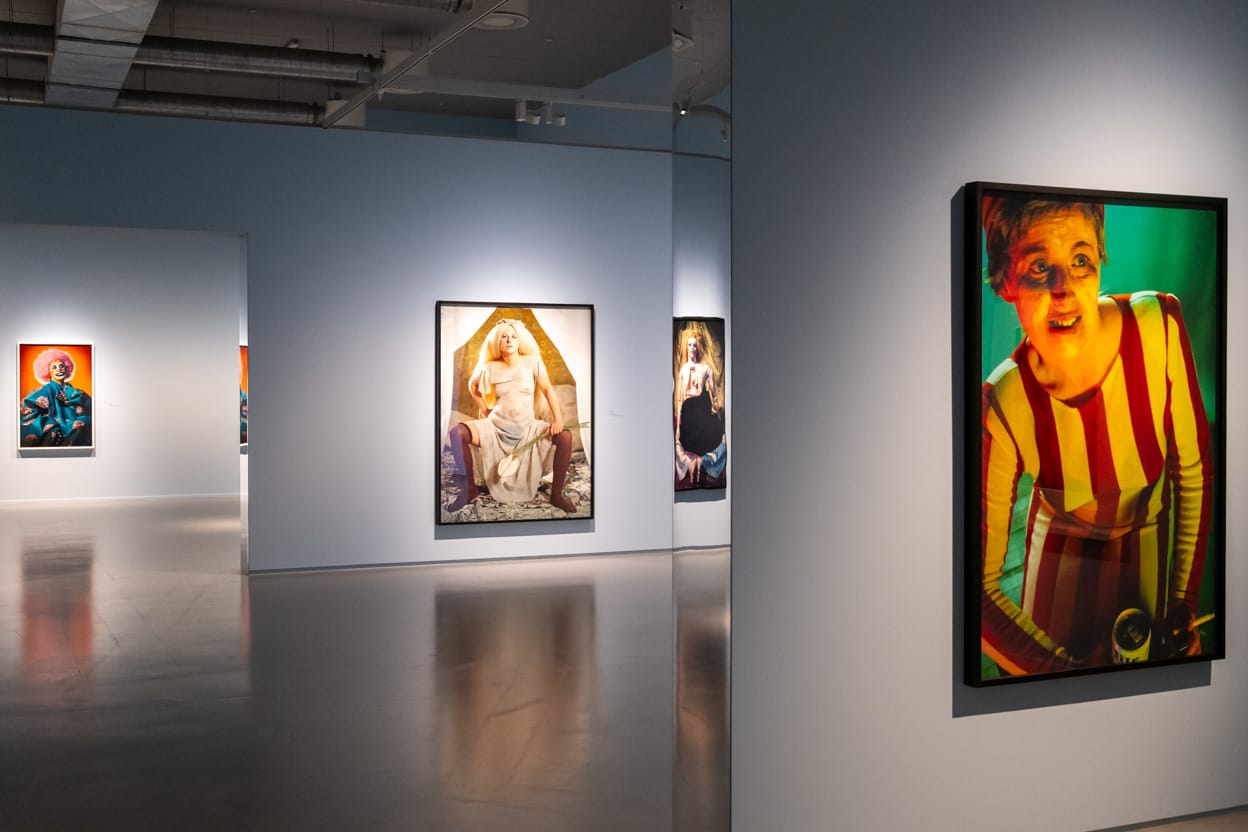
As part of the Ensor year Antwerp’s photography museum (FOMU) has organized a retrospective of the American artist Cindy Sherman. Like Ensor, Sherman frequently employs masks to challenge social and cultural conventions. And like Ensor, Sherman is fascinated by the grotesque and the carnivalesque. The exhibition features more than 100 works from the 1970s to the present and focuses on Cindy Sherman’s engagement with the world of fashion.
The exhibition opens with one of Sherman’s first works, “Murder Mystery” (1976) and a selection of her most famous work “Untitled Film Stills” (1977-1980). In a series of black-and-white photographs, Sherman takes on the role of various stereotypical female movie characters, ranging from the lonely housewife to the femme fatale. Each photograph is carefully staged in terms of costume, pose, lighting and camera position. Aesthetically, the photographs reference vintage Hollywood films, film noir and European arthouse cinema of the 1950s and 1960s. What makes “Untitled Film Stills” stand out to this day is that each photograph implies a narrative. What happened? What will happen next? What is going on outside the frame?
In his book Old Masters and Young Geniuses. The Two Life Cycles of Artistic Creativity (2006) David Galenson distinguishes between conceptual innovators, who make sudden breakthroughs by formulating new ideas and experimental innovators, who work by trial and error. Conceptual innovators typically make their breakthrough work at an early age, whereas experimental innovators create their best works later in life.
Cindy Sherman is a typical example of a conceptual innovator in this sense, because almost everything she has done after “Untitled Film Stills” are variations on the same idea: using make-up, wigs and costumes she transforms herself into a different persona, whereby she often exaggerates some characteristics to the point of parody.
Cindy Sherman has long been one of the darlings of critical theorists. Her work is said to be subversive and to interrogate established notions of beauty and femininity. I often have the impression that these texts merely rehash previous texts. For how subversive is her work, really?
In the early 1980s, when Sherman was an up and coming artist, the commissions she received from fashion magazines were occasionally rejected. But by the 1990s fashion houses and magazines had moved away from the glossy images of the 80s. Photographers such as Wolfgang Tillmans, Juergen Teller and Corinne Day shot to fame with photographs that embraced a more authentic realism. Sherman suddenly found herself being co-opted by the system she had once set out to disrupt as fashion houses seeking to project an edgy image gave her carte blanche. And in a botoxed world the grotesque is everywhere. A series of photographs created for Balenciaga (2007-2008) in which Sherman poses as an aging fashion victim is indistinguishable from Tina Barney’s and Lauren Greenfield’s photographs of the ultra rich.
The top floor of the chronologically organized exhibition is dedicated to Sherman’s most recent work. In the early 2000s she began to experiment with digital image manipulation. The results are, well, not that good. Indeed, I wish I had skipped these last two rooms, because they made me reconsider her previous work.
I still love Cindy Sherman’s older work, especially her history portraits for which she used paintings by Old Masters such as Caravaggio and Raphael as a starting-point. In this series Sherman photographed herself with clearly visible false breasts, bellies and other props. These works have lost none of their critical power and still invite contemplation. By emphasizing the artificiality of her own staged portraits she calls into question the presumed realism of the historical portraits which she references. These too are constructions. There’s a lot more that I could say about this series, but to do so I would have to don my critical theorist cap, which I still have lying around somewhere.
Cindy Sherman is at FOMU, Antwerp until 2 February 2025.